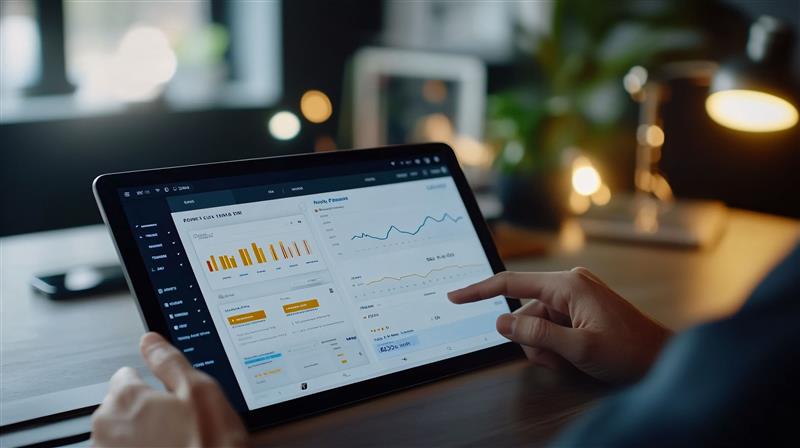Getting started with investing can be exciting. You hear stories about people making great returns, growing their wealth, and achieving financial freedom. Whether it’s shares on the ASX, property or newer digital assets, the potential upside is tempting. But alongside the potential for gains, there’s a fundamental rule that every single investor, new or experienced, needs to live by: Never invest more money than you can genuinely afford to lose.
It sounds simple, maybe even obvious. Yet, it’s a rule that’s surprisingly easy to forget when you are caught up in the excitement of potential profits. Let’s break down why this principle is the bedrock of responsible investing.
What does “afford to lose” actually mean?
This phrase isn’t about expecting to lose money. Nobody invests with the goal of losing. Instead, it’s about risk management and protecting your financial wellbeing.
Money you can “afford to lose” is discretionary income. It’s money left over after you’ve covered all your essential living expenses:
- Rent or mortgage payments
- Utility bills (electricity, water, gas, internet)
- Food and groceries
- Transportation costs
- Insurance premiums
- Debt repayments (credit cards, personal loans)
- An adequate emergency fund (typically 3-6 months of essential living expenses).
If losing the money you’ve set aside for investing would mean you couldn’t pay your rent, cover an unexpected car repair, or put food on the table, then you cannot afford to lose it. That money isn’t investment capital; it’s survival capital.

Protecting your financial foundations
The most crucial reason to follow this rule is to safeguard your basic needs and financial stability. Life throws curveballs – job losses, medical emergencies, urgent home repairs. Your emergency fund is there for these moments. Your investment capital should be separate.
If your investments take a downturn (which can and does happen), and that money was earmarked for essential bills or your emergency buffer, you could find yourself in serious financial trouble. You might be forced to sell your investments at the worst possible time – when prices are low – just to cover immediate costs, locking in losses and potentially digging a deeper financial hole.
Keeping emotions in check
Investing can be an emotional rollercoaster. When you invest money you desperately need, fear and greed become amplified.
- Fear: If the market dips, the fear of losing essential money can cause panic. This often leads to selling investments prematurely, often at a loss, missing out on potential future recoveries.
- Greed: Seeing markets rise might tempt you to pour in more money than you should, perhaps even borrowing or dipping into essential funds, hoping for quick riches. This significantly increases your risk if the market turns.
Investing money you can afford to lose helps you stay rational. You can view market fluctuations with a calmer perspective, understanding that investing is usually a long-term game with ups and downs along the way. You’re less likely to make rash decisions based on short-term market noise.
Allowing for long-term growth
Most successful investing strategies require patience and a long-term outlook. Markets fluctuate. There will be good years and bad years. If you’ve invested money you might need in the short term, you don’t have the luxury of waiting for a market recovery.
Using only funds you can afford to set aside for the medium to long term allows your investments time to potentially grow and ride out inevitable downturns. It aligns your investment timeframe with the nature of the assets you’re investing in.
Understanding investment risk
It’s vital to remember that all investments carry some level of risk. Shares can go down, property markets can cool, and even traditionally “safer” investments aren’t entirely risk-free. Some investments, like Contracts for Difference (CFDs) or highly speculative assets, carry significantly higher risk.
Understanding this risk is key. When trading products with leverage, like CFDs, both potential profits and potential losses are magnified. This makes risk management even more critical. Some brokers recognise this and offer protective features. For instance, easyMarkets offer negative balance protection as standard on their platform. This means that even in highly volatile market conditions, a trader’s account cannot go into a negative balance, ensuring they cannot lose more money than they have deposited for trading. This is one example of a tool designed to help manage the inherent risks, but the core principle of only risking affordable capital remains paramount.
How to put this rule into practice
- Honest Budgeting: Track your income and expenses meticulously. Know exactly where your money is going.
- Build Your Emergency Fund: Prioritise saving 3-6 months’ worth of essential living expenses in an easily accessible savings account. This is not investment money.
- Define Your Goals: Why are you investing? Retirement? A house deposit in 10 years? Knowing your goals helps determine your risk tolerance and time horizon.
- Start Small: You don’t need a fortune to start investing. Begin with smaller amounts you are comfortable potentially losing. Learn the ropes gradually.
- Separate Your Funds: Keep your investment money clearly distinct from your everyday banking and emergency savings.
Investing can be a powerful tool for building wealth over time, but it must be approached responsibly. The golden rule – never invest more than you can afford to lose – isn’t about pessimism; it’s about financial prudence. It protects your essential needs, helps you make rational decisions, and allows you to stay invested for the long haul. By respecting this rule, you build a more sustainable and less stressful path towards your financial goals.







